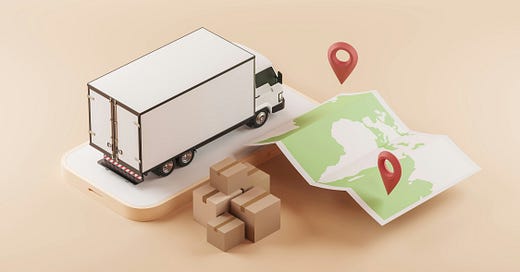Service Designers vs. Cartographers: Mapping Experiences and Spaces
A surprising connection
While seemingly worlds apart, cartographers and service designers share a fundamental goal: guiding people through complex landscapes. One maps physical terrain, the other, the intangible realm of experiences.
Despite their differences, both professions rely on a deep understanding of systems, relationships, and the art of simplifying complexity.
Cartographers: Architects of the Physical World
Cartographers are the architects of the physical world. They transform vast amounts of geographic data into clear, navigable maps.
By understanding the intricate relationships between terrain, bodies of water, roads, and climate zones, cartographers create tools that help us navigate the world around us. Their work involves:
Understanding Systems: Cartographers must grasp the interconnectedness of geographic and natural systems.
Simplifying Complexity: They balance detail with clarity, ensuring maps are easy to read and understand.
Providing Guidance: Maps are not just visual representations; they are tools for decision-making.
Service Designers: Architects of the Digital Age
Service designers, on the other hand, focus on creating seamless experiences in the digital age. They map out user journeys, identifying touchpoints and understanding the relationships between people, technology, and processes.
Their work involves:
Understanding Systems: Service designers analyze complex social, technological, and organizational systems.
Simplifying Complexity: They translate complex services into intuitive flows, often using visual tools like journey maps.
Providing Guidance: Unlike cartographers, service designers guide users through intangible experiences, helping them achieve their goals.
Points of Convergence
Despite their differences, cartographers and service designers share several key similarities:
Mapping: Both professions create maps, albeit in different forms. Cartographers map physical terrain, while service designers map user experiences.
Data Analysis: Both rely on the ability to analyze vast amounts of data and distill it into meaningful insights.
User-Centric Design: Both professions prioritize the user experience. Cartographers ensure maps are easy to use for navigation, while service designers create intuitive and enjoyable experiences.
Divergence in Focus
While there are similarities, there are also significant differences between the two professions:
Tangibility: Cartographers deal with tangible elements, while service designers work with intangible experiences.
Static vs. Dynamic: Physical maps are generally static, while service experiences are dynamic and can change over time.
End Goals: Cartographers aim to create accurate and easy-to-read maps, while service designers focus on creating seamless and enjoyable experiences.
A Shared Mission
Though their domains differ, cartographers and service designers share a common mission: to guide people through complex landscapes. By understanding systems, simplifying complexity, and focusing on the user, both professions play a vital role in helping us navigate the world around us.




